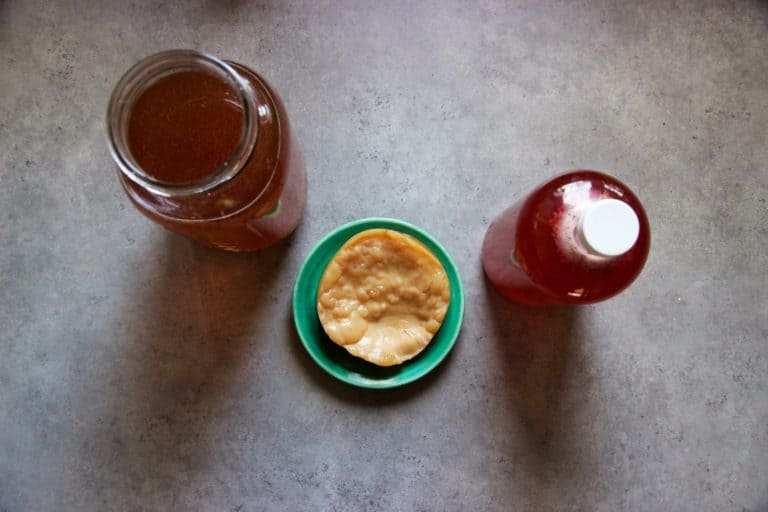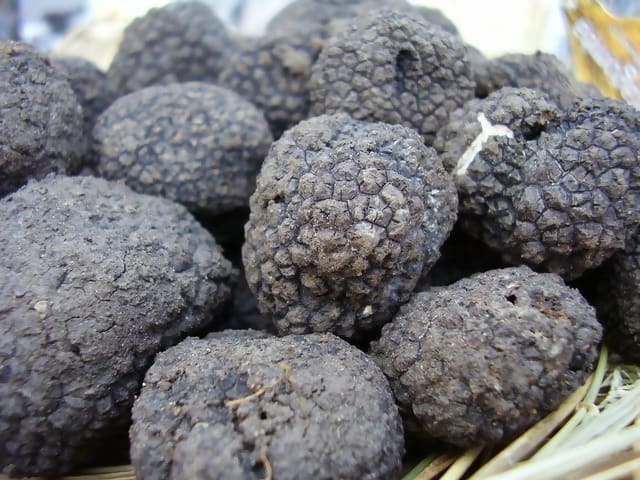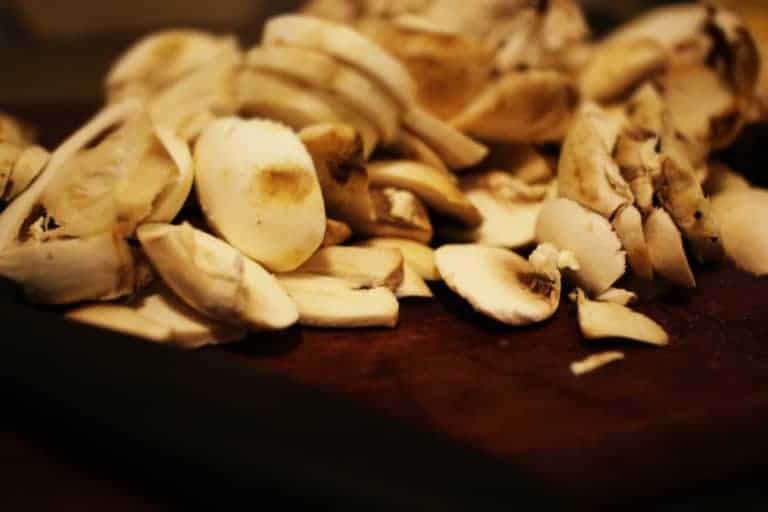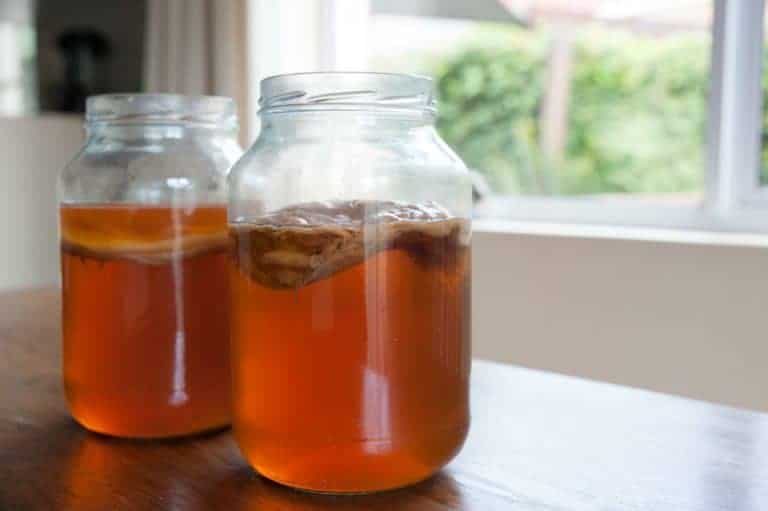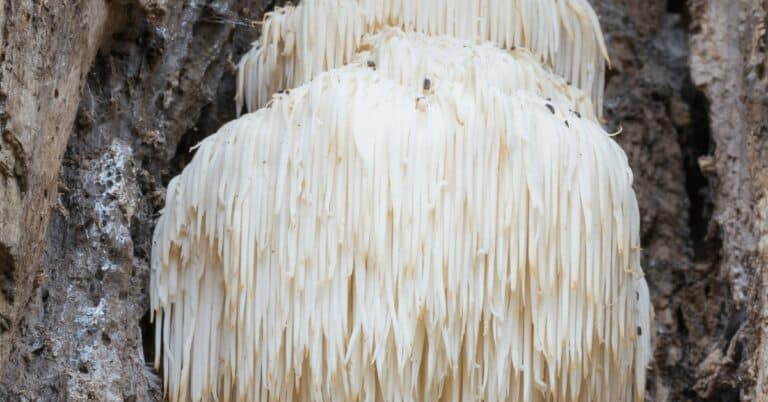Gourmet Guide to Mushrooms

Neither plants nor animals, mushrooms are the fruiting bodies of fungi in their own unique domain of classification. They have been consumed for thousands of years in cultures all across the world, but only recently has modern science caught up to all of their amazing features.
As a versatile food source, mushrooms are a low-calorie, nutrient-packed food that works great in a wide variety of vegetarian and vegan dishes. They add a savory flavor and great texture while also offering a wide range of health benefits.
Mushrooms for many people are often the most mysterious ingredients to store, prepare, and cook. We’re going to take a deep dive into the world of eating these fantastic fungi, done right.
So, what are gourmet mushrooms, anyway?
While some might feel slightly mycophobic when cooking beyond ordinary button mushrooms, there is a lot to gain from learning about and cooking with the wide variety of delicious gourmet mushrooms. Gourmet mushrooms are very commonly grown and eaten in Europe and Asia, but the popularity in the United States is growing fast as increasingly more people discover the great taste and health benefits. Indeed, almost ten million pounds of oyster and shiitake mushrooms were sold in the U.S. just last year.
Gourmet mushrooms are found wild, grown outdoors on logs, and grown indoors in bags using straw, sawdust, or soybean hulls in a roughly 55 degrees fruiting chamber. As quite the cash crop, gourmet mushroom cultivation is a lucrative and rapidly growing market in the United States and beyond.
It is very important to find a high-quality, well-trusted to obtain your mushrooms, especially the wild varieties. You can’t go wrong with whole food grocery stores and local farmers markets. Picking and eating wild mushrooms should never be done as a novice without an expert to correctly identify them due to the similar shape and features that some edible varieties have with poisonous ones. For instance, edible paddy straw and puffball mushrooms are often fatally mistaken for Amanita phalloides, or the death cap, which is increasingly more common in northwestern areas of North America.
With that bit of background, let’s take a look at the characteristics of the popular types of gourmet mushrooms, what they taste like, and how they are commonly cooked to bring out their best flavor.
Characteristics: Also known as the baby portobello, this mushroom is widely sold and eaten in North America and all around the world. They are small to medium in size, have a rounded cap that ranges from light to dark brown, and a short, stubby stem. They contain potassium, amino acids, vitamin D, selenium, riboflavin, phosphorus, zinc, folate, and manganese.
Flavor: Pleasant and mild, somewhat earthy. Meaty and more flavorful than the more immature white button mushroom.
Cooking: Great when grilled, baked, roasted, sautéed, or stewed. Pairs well with beef, wild game, or vegetable dishes
Characteristics: When they are not yet mature, portabella are called criminis (and criminis are the mature white button mushrooms). They have a round, flat, spongy cap that ranges from dark brown to tan connected to a thick, white stem. They are impressive in size, with cap diameters exceeding six inches. Underneath the cap, they have dark brown, fleshy gills. These mushrooms are common in Italian cooking and have a dense and steak-like texture. For this reason, they are a great meat substitute in a wide variety of vegetarian and vegan dishes. Contains vitamin D, copper, selenium, potassium, phosphorus, vitamin B6, and niacin.
Flavor: Smoky, earthy.
Cooking: Great grilled, sautéed, and broiled as a meat alternative, side dish, or main ingredient. Also works well stuffed as an appetizer.

https://www.istockphoto.com/photos/oyster-mushroom
- Oyster (Pleurotus ostreatus)
Characteristics: These mushrooms are very common in both Chinese and Japanese dishes. They grow in the wild on the sides of trees but mostly the store-bought oysters are cultivated. Oyster mushrooms are medium to large in size, have a very short or non-existent stem, fan-like caps that can be dark gray, brown, tan, pink, or even yellow. The cap has curled edges that become wavy and lobular with age. Underneath the cap, it has white gills (when fresh) and the flesh is meaty, and firm. When the mushroom is old, the gills are grey. When cooked, it takes on a delicate, meaty texture. Contains vitamin B6, vitamin D, fiber, potassium, and folate. Also has ergothioneine, which is an anti-inflammatory antioxidant.
Flavor: Silky smooth, savory flavor.
Cooking: Can be torn and thrown into chicken, seafood, pork, or veal dishes as well as sauces and soups. Saute with butter and onions to make this mushroom shine.

Enoki (Flammulina velutipes)
Characteristics: The Enoki, or Enokitake, mushrooms have small, white, convex caps attached to long stems. They are cultivated but also grow wild on Chinese Hackberry trees, ash trees, mulberry and persimmon trees. Contains fiber, calcium, potassium, selenium, copper, phosphorus, niacin, and iron. They have bioactives known for their anti-inflammatory and immune-boosting properties.
Flavor: A very mild, slightly nutty and fruity flavor and a delicate, crispy texture.
Cooking: They are great sauteed, deep-fried, or in soups. They will soak up the sauces and flavors of any dish nicely and make a healthy, gluten-free pasta noodle substitute. Also eaten raw in salads or as a garnish in soups.

Shiitake (Lentinula edodes)
Characteristics: Meaning “oak fungus” in Japanese, Shiitake mushrooms are easily ID’d by their umbrella-shaped brown caps, tan gills, and wide open veils. They have a savory, garlic-pine aroma when cooked and a firm, meaty texture. The thin stems are tough and woody and so are removed prior to cooking, and either discarded or used as flavoring in gravy or stocks. Contains vitamin A, B2, B12, C, D, iron, copper, selenium, zinc, manganese, and calcium.
Flavor: Smoky, umami, nutty, buttery taste
Cooking: Great fried, broiled, sautéed, steamed, and grilled. Works well when added to stir frys, pastas, soups, entrees, and side dishes.

Porcino (Boletus edibus)
Characteristics: Porcinis are small to large in size, very thick stem and a rounded cap that is a reddish-brown color. The flesh is white and solid, and the body has a smooth texture.They are a prized wild mushroom, common in Italy and France. High in iron, fiber, vitamin C, A and various antioxidants.
Flavor: aromatic, earthy/woodsy flavor.
Cooking: Great grilled, sautéed, roasted, and braised.
https://www.istockphoto.com/photos/morel-mushroom
Characteristics: Morel mushrooms are small to large in size, with caps that are spongy and cone-shaped attached to short, white stems. Color can range from yellowish to light brown, grey, or dark brown. Caps are fragile, with a honeycomb exterior with many bumps and ridges. When cooked, they are meaty and tender. They are available just for a short time in spring and sold up to $20/pound, but dry morel are available year-round. Great source of fiber, iron, and manganese. Contains copper, zinc, phosphorus, and vitamin D, E K, B, potassium, and calcium.
Flavor: Woody, earthy flavor. The flavor increases as you cook it, especially with butter. To some, they taste kind of like apricots.
Cooking: Common in French cuisine sautéed or fried. The jumbo sizes can be stuffed with sausage or crab and makes for a great appetizer. The smaller varieties are ideal when added to slow-cooked stews and casseroles.

Maitake (Grifola frondosa)
Characteristics: Also known as the Hen of the Woods, Maitake are cultivated and found in the wild in the Northwestern United States and Japan. They range in size from small to very large, with some growing up to one hundred pounds. The cap is smooth, velvety, with wavy edges. Their color can be pure white, tan, or brown, depending on how much sunlight they receive. They are known for their earthy aroma and succulent, feathery texture. Great source of fiber, potassium, copper, amino acids, vitamin B, C, antioxidants, and beta-glucans.
Flavor: Nutty, earthy and smoky flavor
Cooking: Best lightly satueéd in butter or oil, but also great baked, fried, grilled, and roasted. Can be used as a main ingredient, side dish, or in soups.

Chanterelle (Cantharellus cibarius)
Characteristics: Chanterelles are one of the most popular wild mushrooms. They have trumpet-shaped caps, a nice golden color, and are fleshy but firm. They are common in European cuisine and native to the US. Their texture is dense and fibrous but not tough. In the refrigerator, they can last longer than other mushrooms, up to ten days. High in vitamin D2, vitamin A, potassium, iron, chromium, protein, and eight essential amino acids.
Flavor: They have a nutty, fruity, almost peppery flavor (and some say they smell like apricots).
Cooking: Sauteed best, but also broiled and fried. Perfect when fried with butter. parsley, and garlic.

Beech (Hypsizygus tessellatus)
Characteristics: Native to East Asia and also known as Hon-Shimeji, these mushrooms are typically found in clusters and have crunchy, brown caps. In the wild, they grow on fallen beech trees (hence the name). Grow in clusters and produce tender brown or white caps with white stems. High in pantothenic acid, riboflavin, thiamin, and potassium.
Flavor: Nutty, and mildly sweet.
Cooking: These mushrooms are great with vegetables and in a stir fry. Many add to sauces, stews, or soups as a last ingredient to preserve its crispy texture.

King Trumpet (Pleurotus eryngii)
Characteristics: This is one of the largest of the oyster mushroom species. Like portobellos, the King Trumpet is a great option as a meat alternative. It has a firm, crunchy/meaty texture with a an elegant flavor. It’s characterized by a thick stem, short gills, and tender flesh. They have a comparably longer shelf life and can stay good in the fridge for over a week.
Flavor: Umami when cooked, very mild when raw.
Cooking: Great sauteed, grilled, broiled, or stewed. Commonly used in meat, pasta, and fish dishes.
What is the Shelf Life of Mushrooms?
Generally speaking, large, whole mushrooms like king trumpet and chanterelles will store longer than smaller, sliced mushrooms like criminis. Whole mushrooms last for a few days more because they have less surface area exposed to the air. It’s fairly easy to tell when mushrooms have gone bad. Some develop a signature sticky/slimy surface and appear darker in color, and others will dry out and become wrinkly. If you start to see and feel the beginnings of spoilage, you can quickly cook them to extend their shelf life by a few days.
When totally bad, they taste sour, become mushy, slimy, or wrinkly, and will turn brown or black. They may also emit a foul, unpleasant odor. There could be mold contamination, so spoiled mushrooms should be discarded immediately. Consuming expired mushrooms can lead to undesired health problems such as food poisoning due to the pathogenic bacteria, yeasts, and mold present.
In general, fresh whole mushrooms can last from 7-10 days in the fridge. If they are sliced, they can last for 5-7 days, and when cooked, for about 7-10 days.
Pre-packaged mushrooms from the grocery store (usually wrapped in cellophane) will last about 5-7 days when stored immediately in the refrigerator the day of purchase. Dried mushrooms, on the other hand, can last 2-3 years in the counter. Whole Morels are more prone to spoilage with their many small crevices and are best eaten within four days.
Canned mushrooms, which are immersed in water, can last upwards of a year. This type is protected from air when unopened, so moisture won’t hasten the spoilage nearly as quickly.
How do I prepare mushrooms?
You can clean gourmet mushrooms the same way you would clean a common button mushroom. Clean mushrooms by gentle wiping the cap and stem down with a soft mushroom brush or damp cloth to remove any dirt or debris. Brushes (such as a toothbrush or pastry brush) are a great option for mushrooms like chanterelles or morels with creased or honeycombed caps.
Mushrooms tend to absorb some water so it is not recommended to soak them or rinse for a long time. You can also quickly rinse them and pat them down with a paper towel, or even better, use a salad spinner. Mushrooms with exposed gills, such as portobellos or shiitakes, absorb more water, so it is better to use a brush or damp paper towel to wash these. Also, when preparing portabella, it is common to remove the dark gills with a spoon. When left in, they can discolor a dish and turn it muddy. To keep them as fresh as possible, don’t wash them until you are ready to use them.
Drying mushrooms is another great alternative to freezing. They can be rehydrated when needed, and take up very little space in the pantry. To dry, use a dehydrator or a low-temp oven and then keep them in an air-tight container until used. To rehydrate mushrooms, first clean them, and then soak them in warm water, wine, or broth for twenty minutes.
The liquid can be filtered and added to sauces, soups, or stews for an extra savory mushroom flavor. Dried mushrooms tend to be more costly than fresh mushrooms but can add that delicious ‘mushroom flavor when the fresh ones aren’t in season or available at the store.
How do I store mushrooms?
Once in the fridge, there are several things you can do to extend their shelf life. When storing fresh mushrooms, the two things to keep in mind are moisture levels and breathability. It’s important to store them when they are as fresh as possible. As soon as they are picked, the moisture starts to come out of them, so always look for mushrooms that are spongy, light, and have the characteristic metallic mushroom aroma.
Mushrooms prefer to have air circulation, so do not close them up tightly in a plastic bag. If you want to slow the spoiling process, keep the whole, unwashed mushrooms in paper or plastic bags that are partially open. The paper bag helps to absorb the moisture that will be released by the mushroom into the fridge environment. Alternatively, you can use plastic baggies with some dry paper towels lining it to absorb the moisture. If the mushrooms came in a pre-packaged box wrapped in cellophane, keep them in that until used because they are designed for breathability. If you don’t use all of them, you can re-wrap the box with plastic wrap and poke a few holes in it to let the mushrooms breathe. If you’re working with canned mushrooms that are open, transfer them to another container before refrigerating. Open cans are now sensitive to the oxidation process and will last about as long as regular fresh mushrooms.
Mushrooms should not be kept in the crisper drawer of the fridge. This is the most humid environment of the fridge and will hasten the spoiling process. Mushrooms tend to soak up strong odors and flavors, so it is best to avoid placing them near strongly odorous foods unless you plan to combine them later.
Also, since mushrooms bruise and squish easily, be careful not to stack other foods on top of them. Squished mushrooms will spoil more easily because more of the mushroom surface area is exposed.
Should Mushrooms be Eaten Raw or Cooked?
If you want to maximize the nutritional value in mushrooms, it’s best to give them a light cooking. Mushrooms have tough cell walls made of chitin that are hard to digest, but cooking them breaks these down and makes the protein, B vitamins, minerals, and a wide range of novel compounds and bioactives not found in other foods more bioavailable.
Additionally, many mushrooms, including the common button mushrooms and other varieties in the genus Agaricus, contain traces of toxins and carcinogenic compounds such as hydrazine and agaritine that are not heat stable. Cooking, especially grilling or broiling, will destroy these compounds.
Lastly, many mushrooms, including the more exotic and wild varieties, tend to taste better when cooked, as it brings out their smoky, umami, and succulent flavors. Later, we’ll take a look at the variety of ways mushrooms can be cooked to bring out the best in any dish.
Should I eat the mushroom stem?
Mushroom stems can be eaten depending on the variety and are often just as good as the caps. Shiitake mushroom stems are an exception, their stems can be tough and chewy when cooked, and so these are commonly trimmed near the cap. Crimini and white button mushrooms, on the other hand, have stems that are tender enough to eat and so are usually just trimmed only at the base, which can sometimes be woody or tough.
Many recipes call for just the mushroom caps (this smoothens the surface for more equal browning in a stir fry, for instance), but you can still chop them up and use them in things like sauces, noodle dishes, vegetable paté, or added to a pot of stock or gravy to boost the umami flavor.
Can mushrooms be frozen?
Just like other foods, the lower the temperature of mushrooms, the longer they last. Mushrooms may be frozen for six to eight months as a long-term option. Freeze mushrooms as quickly as you can, instead of waiting until they’re on the verge of spoiled.
However, it’s important to note that most mushrooms need to be cooked before they’re frozen, which will reduce the water content in the mushrooms (making freezing easier) and halt the enzymes to preserve their quality.
When frozen raw, many mushrooms like shiitakes do not tolerate the freezing process well and the end product is usually not as tasty, or even mushy. Some mushrooms though, such as hen of the woods and maitake, freeze well. In this case, you can flash-freeze them for a few hours arranged single-layered on a tray lined parchment paper, then transfer into a freezer bag with as much as air removed as possible. The flash freeze helps prevent them from sticking together and freezing into a big clump.
Button mushrooms, shiitakes, and wild mushrooms such as oyster do better cooked before freezing. To do this, select the freshest mushrooms you can find and clean them in the manner described earlier. Chop them into small pieces or slivers less than a half inch thick to prepare. Heat oil or butter over medium/medium-high heat and cook, stirring often, until the mushrooms release their moisture and shrink, about 4-7 minutes. Wait until they cool to room temperature, then transfer to freezer-safe containers or freezer bags (arranged in a thin layer for the latter).
Do mushrooms need to be refrigerated?
While accidentally leaving them at room temperature for some hours shouldn’t be an issue, mushrooms should be stored in the refrigerator to maximize their shelf life.
Try to pick the freshest mushrooms you can find at the grocery store, avoiding the ones that have brown spots or any indicators of age. When brought home, refrigerate the mushrooms immediately and keep them in the refrigerator until used. They should last about a week in the refrigerator, plus or minus a few days depending on the size and variety.
If you’re looking to store them long term, the mushrooms can be kept in the freezer after cooking without issue for 10-12 months.
What are the different ways to cook mushrooms?
Mushrooms are great additions to a wide variety of cuisines to add a savory, meaty, umami taste. In general, it’s difficult to overcook mushrooms because the cell walls are made of a tough polymer called chitin. This allows them to stay firm over a wide range of cooking times and makes them a very versatile ingredient in a wide range of dishes. We’ll take a look at the most popular ways of cooking mushrooms, including roasting, sautéing, deep-frying, marinating, baking, and fermenting.
Roasting mushrooms
Roasted mushrooms are tender, fragrant, and make a wonderful side to a steak or as a main part of a vegetarian meal. When roasting, cut the mushrooms into quarters of similar size.
To roast, preheat oven to 450 degrees. Arrange mushrooms in a single layer on a shallow baking pan, lightly oiled and stem-side up. Roast for twenty minutes, stirring occasionally. When finished, mushrooms should be browned.
Roasted mushrooms can be seasoned with things such as fresh herbs, garlic, balsamic vinegar, oil, butter, salt, and pepper.
Sautéing mushrooms
When sauteing mushrooms, it’s important to keep the mushrooms on reasonably high heat to evaporate the moisture quickly, otherwise, they will steam from the water they release.
To saute mushrooms, first, prepare the mushrooms by slicing into thin strips. Heat your favorite oil or butter in a saucepan over medium-high heat. Stir mushrooms in and cook, stirring frequently, until the mushrooms are slightly brown, about 5 minutes. Herbs such as shallots, garlic and thyme can be added and cooked until fragrant, about 30 seconds. Reduce the heat and simmer until tender, about five to eight minutes.
During the simmer, butter, soy sauce, and lemon juice can be added for more flavor. As an extra tip, simmer in a small amount of liquid before sautéing to help them brown better and reduce the amount of oil required to sauté.
This simple garlic mushroom recipe is confirmed as delicious.
Deep-Frying Mushrooms
Deep fried mushrooms are moist and delicious on the inside and crispy on the outside. Deep-frying works well for common white mushrooms or more exotic ones like oysters and makes for an excellent side dish or appetizer.
The trick to prevent runniness is to let the excess batter drip off and then coat the exterior in bread crumbs.
Here is a well-reviewed recipe that takes less than thirty minutes and requires just mushrooms, water, flour, oil, eggs, and garlic salt.
Marinating Mushrooms
Marinated mushrooms are great served as an appetizer, in a salad, or as a side dish for any type of meat. They are tasty and require very little time in the kitchen. All you have to do is cook mushrooms in boiling, salted water for 3-4 minutes, drain, and then combine the mushrooms with oil and spices. From there, it’s just a matter of transferring to an air-tight container and sticking them in the refrigerator for about eight hours.
Marinated mushrooms will last for about five days in the fridge, and should be served at room temperature.
Here is a recommended recipe that will definitely be a hit at any large gathering, or if you prefer video recipes, this quick recipe by Gordon Ramsay will make delicious marinated mushrooms.
Fermenting Mushrooms
Mushrooms can be fermented raw or cooked. Not all mushrooms look and taste good after fermentation. Some varieties can become sludgy, gooey, and fragile. Though, milkcaps and wooly milk-caps are commonly fermented in Northern Europe.
First, they are soaked in water, then drained. Then, they get salted and spiced, then when more moisture has been drawn out, brined with a mixture of water, salt, sugar, whey, and spices.
When working with cooked mushrooms, first boil them, then cool them and add a brine of water, salt, spices and leaves. Whey and sugar can be added to ferment more quickly. Porcini mushrooms are a common variety for cooked fermentation, but regular white mushrooms also works. White button mushrooms stay firm, and the color remains white at the end of the fermentation process.
A thorough recipe for fermented mushrooms can be found here. The end result can be added to eggs, salads, or included as part of an antipasti platter.
Baking Mushrooms
Similar to roasting, mushrooms can be baked for 20-30 minutes at a lower temperature (such as 375) than a roasting temperature. They are particularly great alongside herbs such as rosemary and thyme, garlic, and butter. The mushrooms should be baked in a single layer arranged on a lightly oiled baking sheet.
This recipe from the Essential New York Times Cookbook is particularly simple and delicious.





